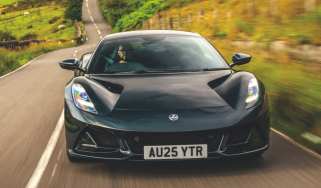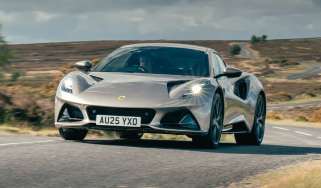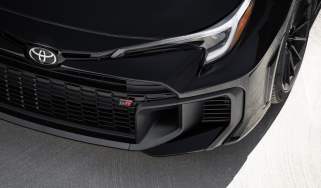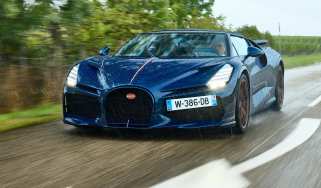As Lotus's latest boss departs, what's next?
After confirming it has no plans to close Hethel, Lotus has announced the departure of the man running the company. So who’s in charge now?
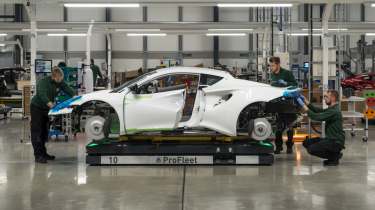
Following the news at the end of June that Geely, the current owner of Lotus, was looking to close the sports car manufacturer’s UK factory in Hethel, Norfolk and the subsequent u-turn, Lotus has now confirmed that Matt Windle, head of Lotus Cars Europe, has left the business. He had replaced Dan Balmer in April, who left the role within a year of joining the company.
Matt Windle’s departure is the latest in countless rounds of departures at Hethel over the last two years, including senior execs, members of the design and engineering teams, communications department and those working within the production facilities. As someone who started their career at Hethel before moving around the corner to develop the first Tesla Roadster project, before coming back once Geely got involved, Windle is no stranger to the storms that blow through Hethel. For him to step away is an ominous sign of what the future holds.
Lotus’s future was thought to be secure following Geely’s acquisition in 2017, but the stop-start production of the Emira due to parts supply issue (the suggestion is that Lotus Cars hasn’t had the cash to pay its bills) and the spectacular and financial failure of the Evija has resulted in Chinese owners Geely leaving nothing off the table - from factories to people - when it comes to deciding the fate of the storied British manufacturer.
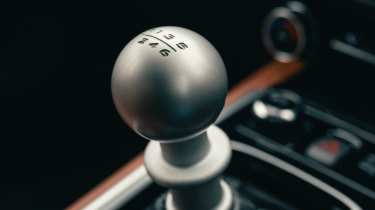
At the time of the rumoured factory closure, Lotus issued a statement saying: “Lotus Cars is continuing normal operations, there are no plans to close any factory.” It has all the reassurance of the chairman of a football club backing their manager after a string of defeats. Before inevitably sacking them a week later.
At the beginning of July Geely-controlled Lotus Technologies, the New York stock market listed company, acquired the 49 percent stake Etika Automotive still held in Lotus Cars to take full control of Lotus UK.
> Lotus has launched a new flagship Emira, and it starts from almost £100k
That the design and engineering teams are little more than a skeleton staff and the production line is barely running suggests that clearly all is not well at Hethel with Geely now having to take sole responsibility for the brand. Some sources even suggest the issues for Geely go beyond Lotus Cars, with Volvo and Polestar facing increasing market pressures around the low sales of their electric vehicles and the considerable financial investment required to develop and manufacture them.
Under Geely ownership Hethel was to be the home of Lotus sports cars, currently the Emira and Evijia, with its Wuhan factory responsible for the company’s electric ‘lifestyle’ cars, the Eletre and Emeya.
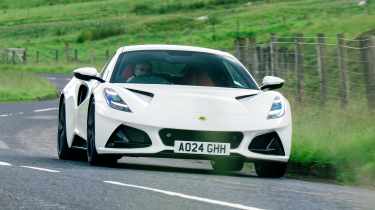
Investment hasn’t been in short supply. A new production hall and all the ancillaries required were built for the battery powered Evija hypercar. When Elise, Evora and Exige production finally came to an end their production halls were thoroughly overhauled and updated to leading 21st Century facilities, including another new production hall integrated for the Emira. They even laid new Tarmac in the car park. Hethel was finally fit for 21st Century car production. Unfortunately, it seems Lotus wasn’t.
The Emira launched to great fan fare. Jenson Button pulled the covers off, people queued at the Lotus stand at the Goodwood Festival of Speed to place deposits. It looked sensational. It would be affordable - £85,000 for the V6, circa £60-65,000 for the 4-cylinder AMG engines version. Look out Porsche!
> A hybrid Lotus Emira could be on the cards
Lotus had a car people wanted. The question now would be: could Hethel keep up with demand? Of course it could, but sadly not because of the increased production capacity available to it. Rather, Lotus was struggling to build what is, when broken down to its constituent parts, a rebodied Evora with a new interior.
When it did arrive it still wasn’t quite ready. The first test cars handed over to the press in 2022 came with a sheet of A4 paper highlighting any discrepancies each test car might have due to them being ‘early production cars’. The Emira V6 evo was sent came equipped with the optional Sport chassis but the lower spec Goodyear tyres of a car with a Tour chassis.
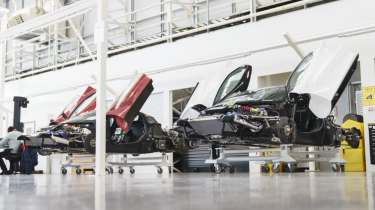
The ABS and stability control systems were also ‘not optimised’ and we were asked ‘please don’t crash it because we’re not sure the airbags work. And take a 10mm spanner with you in case you need to disconnect the battery to turn it off and on again’. And when we track tested it at Anglesey they could only provide part-worn tyres as spares. No wonder the lad sent to come and fix the car when it stopped working arrived in his own Cayman rather than a spare Emira: “I needed to get here.”
Three years and a month to when we last drove an Emira V6, we’ve driven another against its rivals (evo issue 336), and while there was no requirement to bring our own tool kit, it still felt unfinished. It was also only a ‘First Edition’ model that’s no longer available to buy, rather than the latest SE or Racing Line models.
The four-cylinder AMG engined Emira that followed felt like a much better, more resolved car. It lacks the noise and theatre of the Toyota V6 and a manual gearbox, but the turbocharged four and paddleshift gearbox suit it so much better. It was late to market, too. We drove one and really liked it, to the extent that it felt it would give an Alpine A110 a serious challenge. We’ve still not been able to prove this because as soon as it was launched the four-cylinder cars pretty much disappeared. The Mercedes engine that had originally been used went out of certification due to Lotus focussing on getting the V6-engined models to customers and would therefore have to wait until the updated unit was available.
Now it is and the four-cylinder Emiras it’ll be fitted to are called Turbo and SE. I genuinely hope customers will buy it. The Emira is a good car. Class beater? Not quite, but both the Cayman and A110 are remarkable and as a trio they offer three bespoke personalities on a sports car.
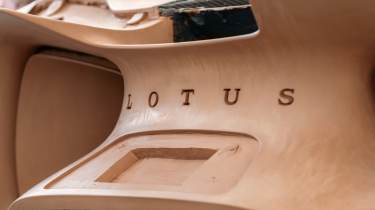
Evija, on the other hand, should never have left the ideation meeting. Whatever was Lotus thinking? A company known for lightweight, compact sport cars that borrowed engines from humble manufacturers to power their sensational cars thought it could build a seven-figure priced hypercar. This wasn’t what it needed. Not then. Not ever. These £2m, 2000bhp cars are follies. Wreckless corporate vanity projects that do irreversible damage. When Porsche quietly sidelines its offering, Mission X, you know there’s no market for them.
With Hethel’s future ‘secured’ there is still a question mark over the remaining 1300 jobs and the impact this has on them and the local economy. Take the human element out of the equation, and company boards do, and look at the numbers it’s a bleak picture that’s painted. In the first quarter of 2025 Lotus delivered 555 sports cars, a 52 percent drop on the previous year, and that’s with North America Emira deliveries finally starting. It delivered 12,134 electric models in 2025, from a facility designed to build 150,000.
Factor in the barren start to quarter two due to America's to and fro on tariffs, and even if our friends across the Atlantic went into overdrive, Emira sales for 2025 are going to be around half the number of the previous year. With Chinese car buyers also non-plussed about the Eletre and Emeya, Lotus’s cash in doesn't get close to the cash going out the door.
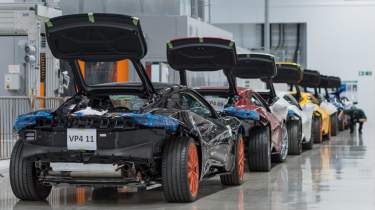
Hethel can’t survive on such low volumes. Lotus, or rather Geely, can’t justify plugging the financial hole this causes. Neither could a rumoured US factory, or rather Lotus using Volvo’s South Carolina factory to build Eletre and Emeyas and whatever they call the reversed engineered plug-in hybrid models based on these two battery electric vehicles. The Lotus ship has sailed, and there’s no cars on it.
Geely buying Lotus was never going to transform it into Porsche, but it should have provided it with a strong foundation to be the best at what it does best – engineering and building innovative cars and schooling the best engineers along the way. Lotus is a specialist. It should have been the opportunity to blend the alchemy of Lotus Engineering with the intuition of Lotus Cars to create low volume products customers would pay a high price for.
In the latter years there have been far too many middle-aged men on the Lotus payroll wearing oversized glow-white trainers spending more time signing leases on city centre vanity showrooms than understanding the business they are paid handsomely to operate in.
Lotus has always sailed too close to the wind, but it seems the storm has finally taken out Hethel.


